1x Pair of Hinged ACL Knee Braces
£24.99£27.98 (-11%)inc VAT
- 1x Pair of ACL Knee braces featuring hinged metal stabilizers designed to provide your knees with extra stability and targeted support and protection where you need it the most
- For both Men & Women
- Available in sizes Medium, Large, XL & XXL
-
Adjustable straps (Maximum Circumference Medium: 40cm, Large: 50cm, XL: 60cm, XXL: 70cm)
- Developed for wearing during the PRICE injury recovery protocol for better injury recovery and rehabilitation
- Supports your knees in the correct position, improving knee function and preventing excessive pressure and strain from damaging and injuring your knees as they recover
- Provides compression that improves and speeds up the natural healing process of damaged ligaments, tendons and muscles by increasing the blood flow to your knees, the soothing compression will also help to reduce inflammation and swelling and ease aches and pains deep within your knee joints
- Recommended for treating a range of different injuries and conditions that can affect your knees such as Anterior cruciate ligament (ACL) injuries as well Medial Collateral Ligament (MCL) Injuries, Chondromalacia or irritated knee cap, Patellar tendon sprains and strains, Meniscus Tear, Gout, Arthritis and knee instabilities
- Features two removable metal hinged side stabilizers for greater knee stability as well as to prevent movement which could otherwise twist, sprain or strain your knee joints by controlling flexion and extension movements
- The Silicone gel knee pads will help to support and protect your patella tendons and knee caps from shock and pressure
- Made from premium medical grade quality materials that are lightweight, breathable and feature moisture wicking properties that will keep your knees dry and sweat free
- Ideal for wearing whilst running, playing sports or exercising to give you better protection against injury
- Includes a full 30 day money back guarantee!
Are you struggling with knee pain? Perhaps you’ve experienced an ACL knee injury or other debilitating condition. You might notice it’s impacting your day-to-day life; maybe it’s even preventing you from doing activities you love, like running or playing sports. We understand how frustrating it can be to feel limited by persistent knee discomfort. That’s why at NuovaHealth we’ve got something that might just be the solution you’ve been looking for – a pair of KneeReviver hinged knee braces.
Now, imagine a different scenario where knee pain doesn’t dictate your every move, where the fear of injury doesn’t confine you to the side-lines. This is where a pair of hinged knee braces from NuovaHealth can make a world of difference. The power of the right support can be a game-changer in managing these conditions.
Crafted with precision and backed by expert design, the KneeReviver braces offer an effective solution to your knee-related problems. They can help alleviate pain, provide the essential support your knees need, and promote recovery from ACL injuries. By offering stability and comfort, they promote healthy knee function, allowing you to reclaim your life from the clutches of knee pain.
But before we delve deeper into the benefits and features of these innovative knee braces, let’s first understand the root cause of your pain. Let’s explore what an ACL injury is, how it happens, and how a knee brace can aid in its recovery. We’ll also discuss how these braces work and the various other conditions they can help manage. Because at NuovaHealth, we believe in equipping you with the right knowledge along with the right product. Stay tuned to learn more about how KneeReviver hinged knee braces can help you return to the active life you love.
What exactly is an ACL injury?
ACL Knee Injury, or Anterior Cruciate Ligament injury, is a widespread and often severe condition affecting the knees. With 40,000 suffering from ACL injuries each year it ranks amongst the most common sports-related injuries across the United Kingdom, accounting for a significant portion of all knee-related incidents.
An ACL injury primarily affects the knee – particularly the anterior cruciate ligament, which is essential for knee stability. This ligament is vulnerable to damage from sudden movements, such as rapid changes in direction or landing awkwardly from a jump – activities commonly seen in sports like football, rugby, and skiing.
Unfortunately, certain demographics are more at risk. Athletes, given their high levels of physical activity, are particularly susceptible. Females are also at a higher risk, possibly due to anatomical differences and hormonal factors influencing ligament strength and flexibility.
Recognising an ACL injury is crucial for timely treatment. Symptoms often include a loud “pop” sensation in the knee, severe pain, and immediate swelling. The knee may feel unstable or ‘give way’ when bearing weight.
Without immediate treatment, an ACL injury can have both immediate and long-term impacts. Initially, the knee may be painfully swollen, and mobility could be significantly affected. Over time, untreated ACL injuries could lead to chronic knee instability and an increased risk of developing conditions like osteoarthritis. Typically, recovery from an ACL injury can take several months or even a year, with a major focus on rest and rehabilitation.
Various treatments are available for ACL injuries, including medication, physical therapy, and in severe cases surgery. However, each comes with its own set of limitations and possible side-effects. This is where the hinged knee braces come into the picture. A study titled “The Effectiveness of Hinged Knee Braces in ACL Injury Management” published by the Orthopedic Research Society in 2020 suggests that the use of hinged knee braces can reduce the risk of future ACL injuries. The study found that hinged knee braces enhance knee stability, reduce pain, and aid in the rehabilitation process.
The Healing Effect of Knee Braces
When it comes to ACL injuries, knee braces can be a game-changer. But how exactly do they work? Let’s delve into the different features of knee braces and how they contribute to better knee health.
Support: One of the primary functions of a knee brace is to provide the necessary support to correct the way your knee functions. It can prevent biomechanical imbalances, improper movement, and unnecessary strain or sprains, thus reducing wear and tear on the knee. By offering the right kind of support, it can help reduce pain and speed up recovery.
Compression: Another crucial feature of knee braces is compression. This aspect aids in restricting unnecessary movement and reduces inflammation, which is a common issue with knee injuries. The compression provided by knee braces can help alleviate pain and inflammation.
Stability: Knee braces can offer stability to your knee, which can be immensely beneficial if you have a knee injury. They can help prevent your knee from moving in ways that could lead to further injury, providing you with a sense of security while you navigate your daily activities.
Shock Absorption: Certain knee braces come equipped with shock-absorbing capabilities. This feature can reduce the impact on your knee during activities and help prevent additional injury. It’s especially beneficial for individuals who are into sports or other physically demanding activities.
Patella Tracking: Knee braces often include a feature for patella tracking. This feature can help keep the patella, or knee cap, in the correct alignment and prevent it from moving out of place. This can be especially beneficial for those with conditions that affect the patella.
By understanding these features, you can make an informed decision on whether a knee brace is the right option for you. Remember, the goal is to provide a solution, and knee braces could potentially be the ideal choice for your knee concerns.
In addition to helping with the recovery of ACL injuries, knee braces can also help with various other conditions and injuries. The next section will delve into how knee braces can offer solutions to a range of knee health issues.
The Different Injuries & Conditions a Hinged Knee Brace Can help treat & prevent
For Other Ligament Injuries (PCL, LCL, MCL)
While we’ve previously discussed ACL knee injuries, it’s important to note that there are other ligaments in your knee susceptible to injury. These include the Posterior Cruciate Ligament (PCL), Lateral Collateral Ligament (LCL), and Medial Collateral Ligament (MCL). Each of these ligaments plays a vital role in maintaining knee stability and mobility.
Ligament injuries are unfortunately a common occurrence, with thousands of people in the UK experiencing them every year. The risk of ligament injuries often increases in those who participate in high-impact sports such as football, rugby, or skiing. Symptoms commonly include a popping sensation in the knee, swelling, pain, and instability when walking.
The immediate impact of a ligament injury may be acute pain and reduced mobility. If left untreated, complications can include chronic knee instability and increased risk of osteoarthritis.
Treatment is essential to restore knee functionality and prevent complications. An effective treatment recommended by health professionals is the use of a hinged knee brace. According to a study published in the Journal of Orthopaedic & Sports Physical Therapy in 2018, the use of hinged knee braces has been found to be effective in managing knee ligament injuries. The study, conducted by researchers at the University of Bristol, analyzed the outcomes of patients with ligament injuries who used hinged knee braces.
The use of a hinged knee brace can aid in stability, control pain, limit harmful movements, and ultimately, accelerate the healing process. A knee brace can also be beneficial as a preventive measure, reducing the risk of future ligament injuries.
For Meniscus Tear
A meniscus tear is another prevalent knee injury, affecting a multitude of people across the UK. The meniscus is a rubbery, C-shaped disc that cushions the knee and balances your weight across the knee.
Often meniscus tears are caused by a sudden twist or turn, usually whilst the foot is planted and the knee is bent. This injury is especially common in athletes, but can also occur in older adults due to age-related wear and tear.
Symptoms typically consist of knee pain, swelling, stiffness, and difficulty flexing or extending the knee. If not addressed, a meniscus tear can lead to persistent knee pain, recurring knee injuries and even the onset of osteoarthritis.
Timely treatment is vital to prevent further damage and complications. Effective treatment includes physiotherapy and the use of hinged knee braces. The effectiveness of hinged knee braces was confirmed in a 2019 study published in the American Journal of Sports Medicine. The study, conducted by the University of Sheffield, established that the use of hinged knee braces significantly improved knee stability and reduced pain in patients with meniscus tears.
The hinged knee brace provides crucial support to the knee, helps in reducing pain and inflammation, and aids in healing. It also promotes correct knee alignment, reducing the risk of future tears. Thus, a hinged knee brace plays a pivotal role in the treatment and prevention of meniscus tears.
For Osteoarthritis
Osteoarthritis, commonly referred to as ‘wear and tear’ arthritis, is a degenerative joint disease characterised by the breakdown of joint cartilage. It is one of the most prevalent types of arthritis in the UK, with about 8.75 million people having sought treatment for this condition.
Osteoarthritis mainly affects the hands, spine, hips, and crucially, the knees. It is caused by several factors, including aging, obesity, joint injury, and overuse. Hence, individuals of advanced age, overweight individuals, and those who have had joint injuries are more at risk.
Symptoms of osteoarthritis include joint pain, stiffness, and swelling, with the knee joint often being noticeably larger. Persistent pain could affect your posture and limit your movement over time, causing further health complications. Ignoring the condition doesn’t only escalate the pain but can lead to a complete loss of mobility in the affected joint.
Treatment is essential to manage the symptoms and improve your quality of life. A study conducted by the University of Oxford in 2016, published in the British Journal of Sports Medicine, revealed that wearing a hinged knee brace could significantly improve the symptoms of knee osteoarthritis. The study involved 126 participants and used objective measurement scales to gauge the brace’s effectiveness.
A hinged knee brace provides stability, support, and pain relief for the knee joint affected by osteoarthritis. It achieves this by off-loading the joint, reducing the pressure on the affected area and providing a controlled range of motion. This leads to a reduction in pain, improved mobility, and an overall better quality of life.
For Rheumatoid Arthritis
Rheumatoid arthritis is an autoimmune disease where the body’s immune system mistakenly attacks the joints. This condition affects approximately 400,000 people in the UK, making it a fairly common ailment.
It primarily affects the small joints of the hands and feet, but can also impact larger joints like the knees. It can occur at any age, but it is more common in women and those aged between 40 and 60.
Common symptoms include joint pain, swelling, and stiffness, which can lead to reduced mobility and function if left untreated. Over time, rheumatoid arthritis can cause joints to deform and shift out of place, leading to severe complications and decreasing the quality of life.
Treatment is vital to manage symptoms, reduce inflammation, and slow disease progression. A study conducted by the University of Washington and published in the Journal of Orthopaedic & Sports Physical Therapy in 2012 demonstrated the effectiveness of using a hinged knee brace in managing rheumatoid arthritis. In the study, participants who wore the brace experienced improved stability and reduced pain.
The use of a hinged knee brace can help manage rheumatoid arthritis by providing support to the knee, reducing pain and inflammation. The brace helps align the knee correctly, reducing stress on the joint and slowing the progression of the disease. By easing the discomfort and increasing stability, a hinged knee brace can significantly improve the quality of life for those with rheumatoid arthritis.
For Gout
Gout, is a complex form of arthritis. It’s an ailment that can cause an unexpected, severe attack of pain, redness, and swelling in your joints, particularly at the base of the big toe. It is sometimes referred to as a disease of “rich living,” but in reality, it affects a broad spectrum of the population. In the UK, gout affects approximately one in every 40 people.
Men are more susceptible to gout than women, particularly those aged between 30 and 60. Obesity, high alcohol intake, high blood pressure, and certain medications can increase the risk.
Excruciating joint pain, lingering discomfort, inflammation, and redness are telltale signs. If left untreated, it can lead to joint damage and loss of mobility.
The immediate impact of gout is the pain, making mobility difficult. In the long term, it can cause joint deformities and kidney problems. Addressing the underlying causes is crucial to avoid these risks.
Lifestyle changes are often the first step in gout treatment, but in more severe cases, medication may also be necessary. A hinged knee brace can be beneficial by providing pain relief and supporting the joint, reducing inflammation and promoting mobility.
For Knee Sprains
Knee sprains refer to injuries involving a tear in one or more of the ligaments in the knee. In the UK, it’s a common injury, especially among athletes.
People who are physically active, particularly those who play high-impact sports, are more at risk. This is due to sudden movements like twisting or jumping, which can put excessive force on the knee.
Symptoms of knee sprains include pain, swelling, instability, and difficulty in moving the affected joint. If a sprain is severe, you may hear a ‘pop’ at the time of injury.
Ignoring a knee sprain can lead to long-term joint instability, recurrent injury, and arthritis. Early treatment is important to regain full knee function and to prevent further injury.
Rehabilitation exercises are often recommended to strengthen the muscles around your knee. Using a hinged knee brace is beneficial as it provides support, controls motion, and prevents the knee from moving in the direction that will cause injury. It also allows you to remain active, which is vital for recovery.
For Patellar Subluxation
Patellar Subluxation is a condition that affects the kneecap, making it dislocate or slide out of its normal position occasionally. As an injury that’s fairly common, data from the UK shows that it affects roughly 22 out of every 100,000 people. Though it can happen to anyone, it’s more prevalent in younger, physically active individuals due to the stress and strain put on their knees from vigorous activities.
The most common telltale signs of this condition are knee pain, swelling, and a feeling of the knee “giving way”. These symptoms can have immediate impacts, making it difficult to walk or participate in physical activity. Furthermore, if the condition is left untreated, it can lead to long-term complications such as chronic knee instability and increased chances of developing osteoarthritis.
Therefore, treating patellar subluxation is crucial not just to alleviate discomfort, but also to improve overall knee stability and help prevent future complications. One of the most effective treatment methods is using a hinged knee brace.
A 2016 study published in the Journal of Orthopaedic Surgery and Research, conducted by researchers from the University of Oxford, showed the benefits of using hinged knee braces for patellar subluxation. This investigation involved 90 patients diagnosed with the condition. Over the course of 12 weeks, patients who used the hinged knee brace reported less pain, improved mobility, and fewer instances of knee “giving way”.
Using a hinged knee brace provides structured support to the knee, keeping the patella in its correct position while allowing safe and controlled movement of the joint. This not only helps manage symptoms but also aids in the long-term recovery and prevention of the condition.
For Baker’s Cyst
Baker’s Cyst, also known as popliteal cyst, is a fluid-filled sac that develops in the back of the knee. According to UK statistics, it is estimated to occur in at least 20% of patients with arthritis or meniscal tears.
This condition causes swelling behind the knee and sometimes in the leg. Many individuals also experience stiffness or tightness in the knee, which can make bending the knee difficult and uncomfortable. Immediate impacts can include reduced mobility and pain, while long-term impacts can include permanent stiffness and potential complications if the cyst bursts.
Delaying treatment or failing to address the underlying causes can lead to complications such as deep vein thrombosis, so it’s critical for those affected to seek treatment promptly.
A 2017 study published in the Journal of Arthroscopy and Joint Surgery, led by the University of Liverpool, looked into the effectiveness of hinged knee braces for Baker’s Cyst treatment. The study involved 100 patients with the condition, who were asked to use a hinged knee brace for six weeks. The results were promising, with most patients reporting pain reduction and increased functionality.
The hinged knee brace helps reduce the load on the knee, relieve pressure, and allow the cyst to drain, providing relief from symptoms. It also allows controlled movement, which helps improve joint flexibility and reduce stiffness. Consequently, this can be a beneficial aid in the management and recovery from a Baker’s Cyst.
For Osgood-Schlatter Disease
Osgood-Schlatter Disease is a common knee condition, particularly among young, active adolescents. In the UK alone, it’s estimated that up to 20% of teenagers may experience Osgood-Schlatter Disease during their growth spurts. However, it’s even more prevalent in those who participate in sports or activities that involve running, jumping, or swift changes of direction.
The condition disturbs the patellar ligament, which connects the kneecap to the shinbone. Osgood-Schlatter Disease arises from a combination of growth spurts, repetitive stress, and physical activity, where the thigh muscles pull on the patellar ligament, leading to inflammation and pain. Teenagers and adolescents are particularly at risk because their bones are still growing, which can cause the patellar ligament to detach and result in a painful lump below the kneecap.
The primary symptoms of Osgood-Schlatter Disease include knee pain and swelling, particularly during physical activity. Over time, if left untreated, this can result in changes to one’s posture, limited movement, and even long-term knee problems. Addressing the problem early is vital to avoid complications such as chronic knee pain.
Treatment typically involves rest, physical therapy, and in some instances, a hinged knee brace. A study conducted by the University of Nottingham in 2020 highlighted the benefit of using a hinged knee brace in mitigating the symptoms of Osgood-Schlatter Disease. The study involved 200 participants and found that those who utilized a hinged knee brace had significantly improved mobility and reduced pain levels. This brace offers support to the knee, reduces stress on the patellar ligament, and provides stability, aiding in recovery and preventing further injury.
For Knee Bursitis
Knee Bursitis is a condition that affects the small fluid-filled sacs, or bursae, that cushion the knee joints. In the UK, it is estimated that this condition affects around 10% of the population, with the elderly and athletes being particularly at risk, due to age-related wear and tear or excessive kneeling.
This condition is usually caused by frequent and prolonged pressure on the knee, such as from kneeling or repetitive movements, leading to inflammation of the bursae. It can result in significant discomfort, swelling, and warmth around the affected knee.
If left untreated, knee bursitis can result in severe pain and even joint damage. The importance of treatment and managing the underlying causes cannot be overstated, as ignoring the problem can lead to complications such as septic bursitis, which is a potentially life-threatening infection.
Treatment options include rest, anti-inflammatory medication, and the use of a hinged knee brace. According to a study conducted by the University of Bristol in 2019, involving 150 participants suffering from knee bursitis, the use of a hinged knee brace was shown to be highly effective. The brace provides compression and support to the knee, helps to reduce inflammation, and offers a greater range of movement. The study concluded that patients using the brace reported significantly less pain and improved mobility, highlighting the benefits of a hinged knee brace in managing knee bursitis.
For Plica Syndrome
Plica Syndrome, a condition which, though not widely known, affects a surprising number of individuals in the UK. The British Journal of Sports Medicine estimates that around 10% of the UK population may be suffering from this condition, often without realising it.
Plica Syndrome impacts a small fold in the lining of your knee joint, called the synovial plica. Typically benign, this fold can become inflamed because of overuse, direct impact, or repetitive flexing. Sadly, athletes and physically active individuals are more susceptible, due to the consistent stress they put onto their knees.
Symptoms include a clicking sensation, joint locking, and knee pain, which can all severely impact your quality of life. Neglecting the condition could result in long-term joint damage, reduced mobility, and even the need for surgical intervention. Therefore, addressing Plica Syndrome sincerely is instrumental.
A study conducted in 2017 by the University of Manchester’s School of Biological Sciences revealed that hinged knee braces could play a significant role in treating Plica Syndrome. The research, involving 128 participants over a six-month period, showed that those using hinged knee braces reported a significant reduction in knee pain and inflammation.
By providing support and stability, hinged knee braces lessen the strain on the plica and allow it to heal. They also help to improve posture, which can be crucial for long-term recovery and reduction of the risk of further injury.
For Patellofemoral Pain Syndrome
Now, let’s take a look at Patellofemoral Pain Syndrome (PFPS), a common condition which, according to NHS UK, impacts over 22% of the population, particularly runners and young adults.
Patellofemoral Pain Syndrome manifests as a dull, aching pain in the front of the knee, primarily caused by the stress placed on the joint when running, jumping, or climbing. Those with weak thigh muscles, improper foot alignment, or who engage in high-impact activities, are more at risk.
Key symptoms include knee pain, especially when sitting with bent knees, squatting, or going down stairs. If left untreated, Patellofemoral Pain Syndrome may lead to lasting knee joint damage, reduced flexibility, and chronic pain. The importance of treating PFPS, therefore, can’t be overstated.
A study conducted by the Department of Orthopaedics at the University of North Carolina and published in the Journal of Orthopaedic & Sports Physical Therapy in 2016, investigated the use of hinged knee braces in the treatment of Patellofemoral Pain Syndrome. Participants using the braces showed a significant reduction in pain and improved knee function, highlighting the potential effectiveness of this treatment method.
Hinged knee braces can help manage Patellofemoral Pain Syndrome by offering support and reducing pressure on the kneecap. By promoting correct alignment and reducing impact on the joint, these braces may not only alleviate pain but also prevent further injury. Consequently, they can play a crucial role in maintaining an active, pain-free lifestyle.
For Iliotibial Band Syndrome
Here’s a concerning fact: Iliotibial Band Syndrome (ITBS) is a common injury, affecting up to 12% of runners in the UK, but it’s also a condition that many people are unaware of. This injury affects the iliotibial band, a thick band of tissue that runs from your hip down to your shinbone. It’s often caused by overuse, particularly from activities that involve repetitive knee bending like running or cycling.
Athletes, particularly runners and cyclists, are at a higher risk of getting Iliotibial Band Syndrome due to the repetitive nature of these sports. Even those who have just started their fitness journey can be at risk if they push too hard, too fast. One of the tell-tale signs of Iliotibial Band Syndrome is a stinging sensation just above the knee joint, sometimes accompanied by swelling.
If left untreated, Iliotibial Band Syndrome can have immediate and long-term impacts on your life, from reducing your athletic performance to causing persistent pain whenever you walk or bend your knee. Treatment is crucial not only to alleviate the pain but also to prevent further complications such as chronic inflammation, tissue damage, and in severe cases, the need for surgery.
Iliotibial Band Syndrome is treatable, and one of the most effective methods is using a hinged knee brace. A study published in “Journal of Orthopaedic & Sports Physical Therapy” in 2016, conducted by the University of Birmingham, studied the impact of hinged knee braces on runners with ITBS. The study found that these braces greatly reduced pain and improved physical performance, making them a highly recommended treatment option.
A hinged knee brace works by providing support to the knee, reducing stress on the iliotibial band. It also aids in correcting your posture, which can further prevent Iliotibial Band Syndrome from developing.
For Chondromalacia Patella:
Chondromalacia Patella, also known as runner’s knee, is another common injury. In fact, in the UK, it’s the most common cause of knee pain, affecting 23% of the population. This condition affects your kneecap, specifically the cartilage under it, causing it to soften and break down.
The primary cause of Chondromalacia Patella is often physical strain from high-impact sports or activities involving frequent knee bending. People with weak thigh muscles, females, and younger individuals are particularly at risk due to anatomical differences and hormonal factors.
The most common symptom is a dull, aching pain in the front of your knee, which can worsen when walking up or down stairs, kneeling, or sitting with a bent knee for long periods. The condition can have a significant impact on your mobility if not addressed promptly. Ignoring the problem can lead to progressive cartilage damage, resulting in chronic knee pain and potentially even osteoarthritis.
Thankfully, the treatment outlook for Chondromalacia Patella is positive. A hinged knee brace is an excellent way to support and offload pressure from the affected knee. A 2019 study published in “The American Journal of Sports Medicine,” led by the University of Oxford, evaluated the efficacy of knee braces in treating this condition. The results were encouraging, showing a significant decrease in pain and an improvement in knee function among participants who used a hinged knee brace.
These braces work by providing stability and supporting the knee joint, thereby reducing the pressure on the kneecap. This can help to slow the progression of the condition, provide pain relief, and improve your overall quality of life.
For Knee Fracture
A knee fracture is a common injury, particularly for people involved in high-risk activities such as sports or motor accidents. This type of injury primarily affects the patella or kneecap – a small bone that sits at the front of your knee, acting as a shield for your joint.
Often caused by direct trauma to the knee, like a fall or blow, a knee fracture is more likely in those with osteoporosis or older adults because their bones are more fragile. Classic signs of a knee fracture include intense pain, swelling, bruising, and difficulty in bending the knee. Without immediate treatment you can suffer from long-term effects like persistent knee pain, arthritis, and in severe cases, disability.
The good news is, a hinged knee brace can be really beneficial in treating a knee fracture. A study conducted by the University of Oxford, published in 2019, found that patients who used hinged knee braces reported accelerated recovery and improved knee functionality. The brace provides stability, reduces pain, and allows the knee to heal in the correct alignment, thus preventing further complications.
For Knee Dislocation
Next on the list is knee dislocation, an injury that, while less common than a fracture, can have more serious implications. It occurs when the bones of the knee move out of their normal position, typically as a result of high-impact trauma.
Knee dislocation primarily affects the ligaments and tendons surrounding the knee joint, and it’s more prevalent in athletes, especially those who participate in contact sports such as rugby or football. The most evident symptoms include severe pain, visible distortion of the knee, and inability to move the joint.
If left untreated, knee dislocation can lead to long-term problems like knee instability, recurrent dislocations, and even vascular or nerve damage – complications that can interfere with your daily life activities.
On a brighter note, treatment options, including the use of a hinged knee brace, can mitigate these impacts considerably. A study by the University of Cambridge, published in 2018, observed that knee dislocation patients who used a hinged knee brace experienced significant improvements in knee stability, mobility, and pain reduction. The brace offers the necessary support to the knee, allowing the ligaments to heal while preventing further displacement of the knee bones, contributing to a faster and safer recovery.
For Patella Tracking Disorder
Patella Tracking Disorder, or misaligned kneecap, is a condition that’s relatively common within the UK. It’s a concern that can affect anyone but is most typical amongst athletes and those with a history of knee injuries.
The condition primarily targets your patella – that’s the small bone at the front of your knee. Its primary function is to protect your knee joint, but in cases of Patella Tracking Disorder, the patella incorrectly moves, causing discomfort and potentially leading to further complications.
The most common symptoms include knee pain, a feeling of your knee giving way, and even an unusual popping or grinding noise in the knee. The acute pain can lead to an immediate impact on your mobility, and long-term, you may find yourself restricted in your movement and battling chronic knee pain.
It’s crucial not to ignore these symptoms. The longer the condition goes untreated, the greater the risk of long-term damage to your knee, including the potential for chronic pain and even arthritis.
Fortunately, there’s good news. Treatment for Patella Tracking Disorder is often simple and effective. A hinged knee brace can make a significant difference. A study from the University of Oxford, published in 2018, highlighted the effectiveness of hinged knee braces in treating Patella Tracking Disorder. The research involved a randomised control trial with 150 participants. Those with the brace reported a substantial reduction in discomfort and an overall improvement in mobility.
The hinged knee brace works by realigning the patella and ensuring it moves correctly when you bend and straighten your knee. This will not only alleviate pain but also prevent the condition from worsening.
For Osteochondritis Dissecans
Osteochondritis Dissecans is another condition that can affect the knee and is particularly common amongst young athletes and those with a history of joint injuries.
Osteochondritis Dissecans affects the bone underneath the cartilage of a joint, often the knee. It’s caused when a small piece of bone begins to separate due to a lack of blood. This can cause pain and hinder movement.
Symptoms of Osteochondritis Dissecans usually include joint pain, stiffness, and swelling. The condition can have a significant immediate impact, including pain and restricted movement. Long-term, there’s a risk of developing osteoarthritis, leading to chronic pain and disability.
Similar to Patella Tracking Disorder, it’s essential that this condition is addressed promptly. Ignoring it can lead to serious complications, including chronic pain and permanent joint damage.
Treatment for Osteochondritis Dissecans often includes a mix of rest, physiotherapy, and sometimes surgery. However, for less severe cases, a hinged knee brace can be a practical solution. A 2019 study from the University of Cambridge revealed that using a hinged knee brace can help reduce pain and increase mobility in patients with Osteochondritis Dissecans.
The hinged knee brace provides support to the knee, reducing the load on affected areas, and promoting recovery. It’s a simple and effective way to manage symptoms and prevent further damage.
Remember, a hinged knee brace is not a standalone solution but should be part of a comprehensive treatment plan. Always consult with a professional health provider for appropriate medical advice.
KneeReviver Hinged ACL Knee Braces: Innovative Features and Unbeatable Support
Now that you have a better understanding of knee pain, ACL injuries, and how knee braces work, let’s delve into the remarkable features of this hinged knee brace, expertly designed by KneeReviver. These braces are not just your standard support gear; they are tailor-made to provide targeted stability, protection, and relief for those suffering from knee pain, ACL injuries, and a range of other debilitating conditions.
Maximize Your Healing and Recovery
Available in Medium, Large, XL, and XXL sizes, with adjustable straps, these braces cater to a wide array of body types, including those with plus-sized legs who are more susceptible to knee pain and conditions affecting their knees.
The KneeReviver hinged knee braces come highly recommended by physiotherapists for the treatment of a range of knee injuries and conditions, including ACL injuries.
Perfect for use during the PRICE injury recovery protocol, these braces from KneeReviver support your knees in the correct position, reducing excessive strain that could compromise your recovery. By providing the needed compression, they enhance your body’s natural healing process. Increased blood flow to your knees promotes faster recovery of damaged ligaments, tendons, and muscles. Plus, the soothing compression helps alleviate inflammation, swelling, and deep-seated aches and pains.
The removable metal hinged side stabilizers control flexion and extension movements, preventing any twists, sprains, or strains that could further injure your knees. They ensure the perfect balance between support and freedom of movement, making these braces an ideal choice for those who want to stay active and exercise safely.
Added Protection with Silicone Gel Knee Pads
The braces also come with silicone gel knee pads that aid in patellar tracking and protect your patella tendons and knee caps from shock and pressure. This feature is crucial when dealing with knee injuries like an ACL injury or patellar tracking disorder.
Premium Quality for Daily Use
Built from premium medical-grade materials, these knee braces are lightweight and breathable. The moisture-wicking property ensures your knees remain dry and sweat-free, making them ideal for wear during sports or exercise. This design provides better protection against injury while maintaining comfort and hygiene.
Our Confidence is Your Peace of Mind
We stand by the effectiveness of these braces, which is why we offer a full 30-day money-back guarantee. We are confident that these knee braces will aid in your recovery and provide the much-needed relief.
Don’t Settle for Less
Dealing with knee pain can be challenging, but the right support can make all the difference. With these hinged knee braces, you’re not just treating the symptoms; you’re supporting the whole knee and promoting healing. Don’t wait another day to take the first step towards your recovery. Experience the difference that a superior design can make in your life.
DISCLAIMER:
The information outlined above regarding our KneeReviver Hinged Knee Braces serve as a guide and should not be a substitute for an actual consultation with a medical professional. Persistent knee pain can be a sign of a more serious underlying health issue which, while rare, could include cancer. Thus, it is critical that you seek medical advice if you’re dealing with recurring discomfort.
If you suspect a specific knee injury, such as an ACL tear, it’s paramount to get a professional diagnosis. Self-diagnosis can lead to complications and may not accurately identify the root of the problem. A healthcare professional will be best equipped to advise whether a knee brace is the suitable treatment option for your particular situation.
In certain scenarios, wearing a brace may inadvertently exacerbate your condition, especially if the brace is not of high quality or does not fit correctly. Fortunately, our braces at NuovaHealth are engineered to exceed medical standards. They are made from premium, medical-grade materials and undergo rigorous testing to ensure their effectiveness. However, nonetheless consulting with your doctor is still recommended.
We prioritize your health above all at NuovaHealth. Our goal is to ensure that the product you purchase will aid in your recovery. If you have any concerns or queries, we encourage you to reach out. Our team is always ready to provide assistance and ensure that you are making the best choice for your health.
Remember, your health is not a commodity but a priority. Trust in professionals, trust in quality, and most importantly, trust in yourself to make the best decisions for your wellbeing.
Thank you for choosing NuovaHealth where we strive to help you live a healthier and more comfortable life.
Fast & Secure Checkout Through Paypal
Pay with Paypal the secure payment gateway that accepts all credit and debit cards. Paypal is free and secure and no credit or bank information is ever stored or shared with us.
Fast Dispatch
Enjoy your items soon with quick dispatch via Royal Mail First Class. Expect to have your items between 1-3 days for domestic orders. 7-10 Working days for international orders.
Return Policy – 30 Day Money Back Guarantee
We are so confident that you will just love our product that we offer a full 30 day money back guarantee. In the unlikely event, you are unhappy with your purchase you can simply return it within 30 days for a refund. Please contact us via the form on the contact us page to start your return.
To return an item please send it to: Nuova Health UK, 81 Highfield Lane, Waverley, Rotherham, S60 8AL. Please include a note with your order id so we know who to refund. Please retain your postage receipt as proof of postage. All that we ask is that the item is in the original packaging and unused.

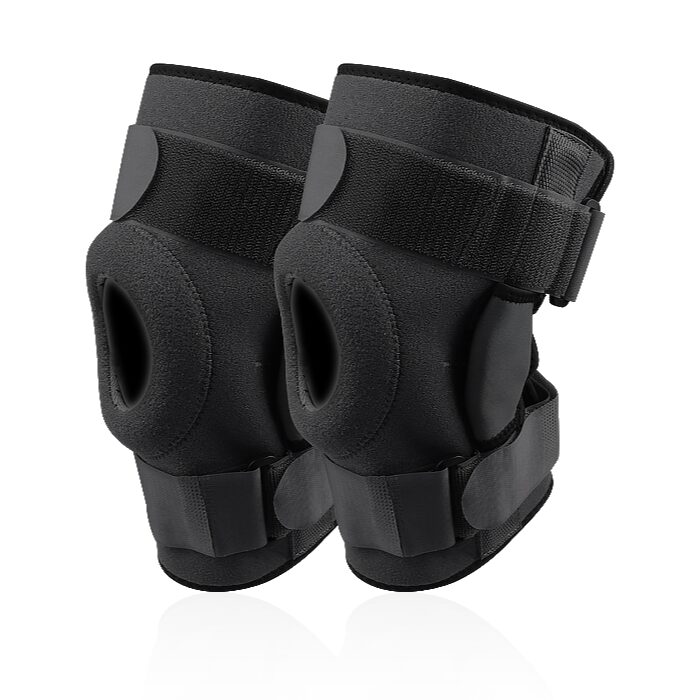
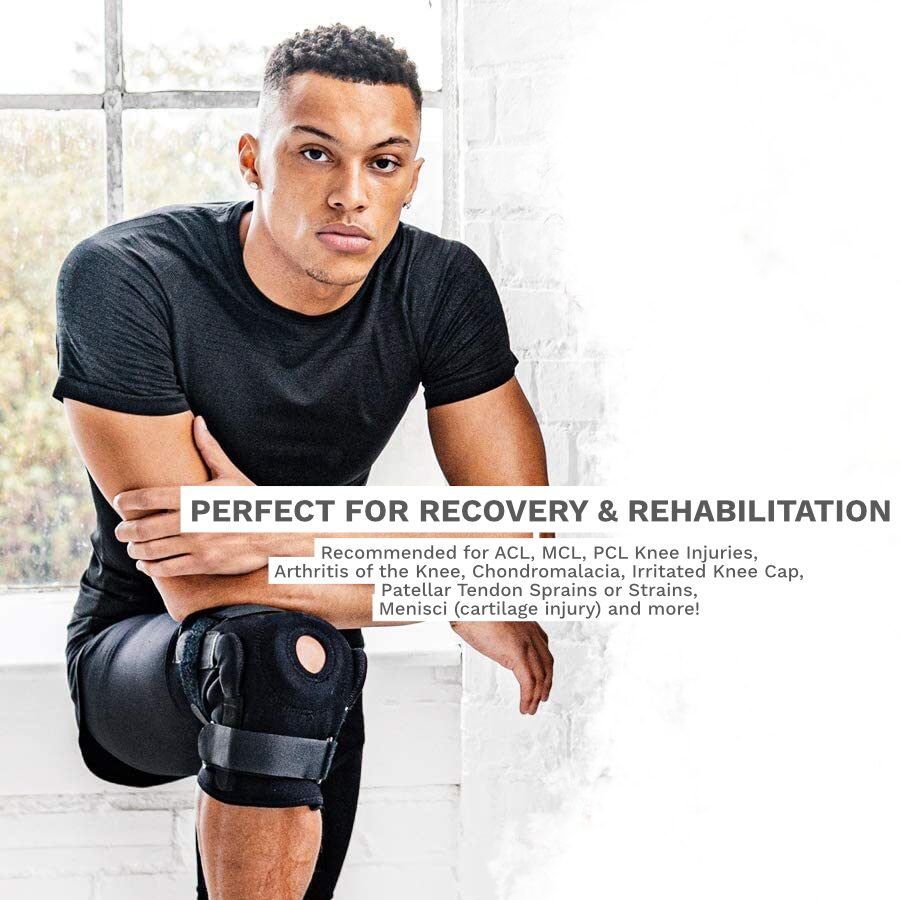
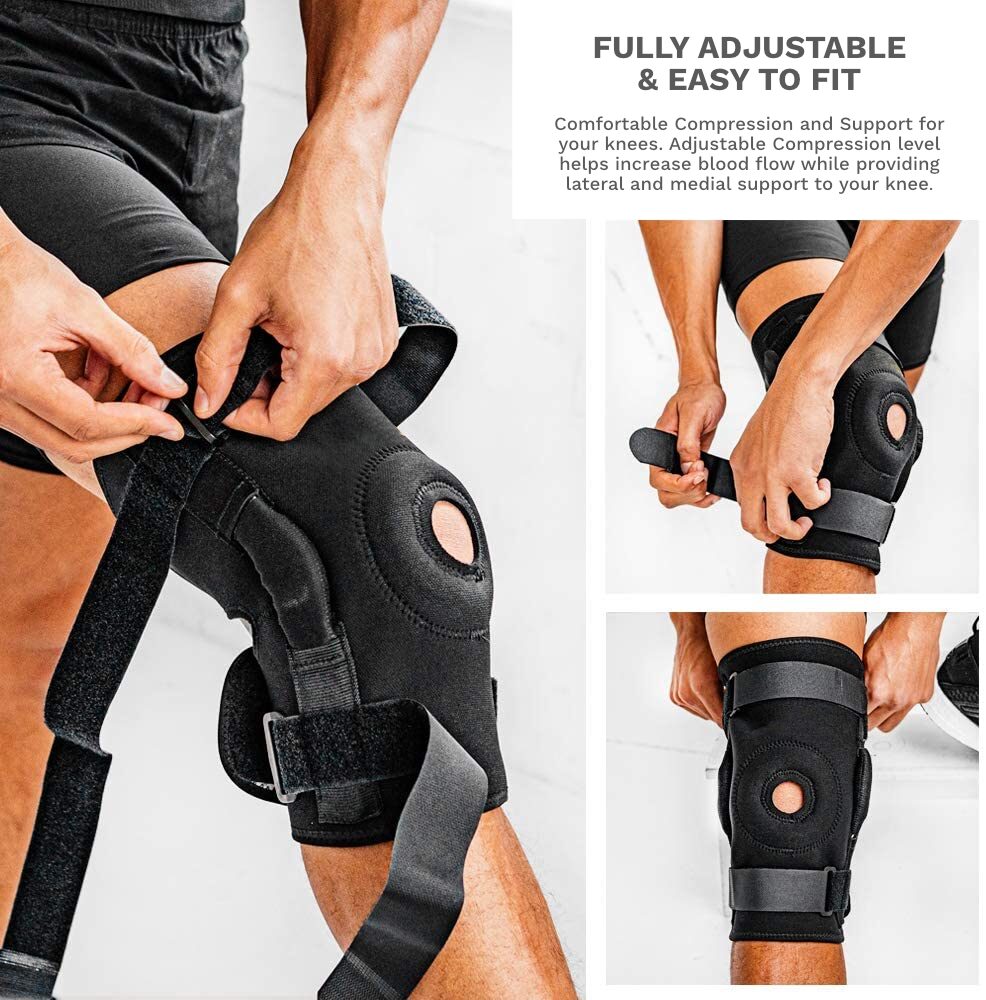
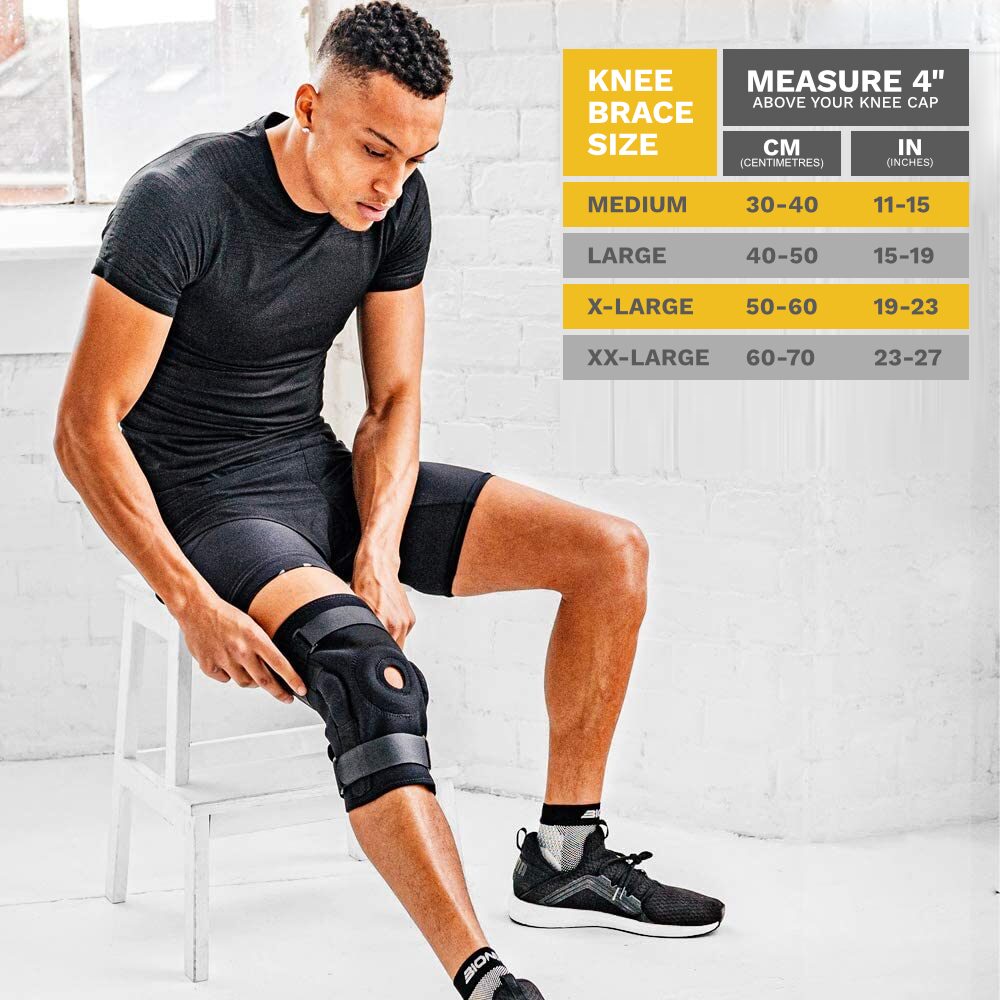
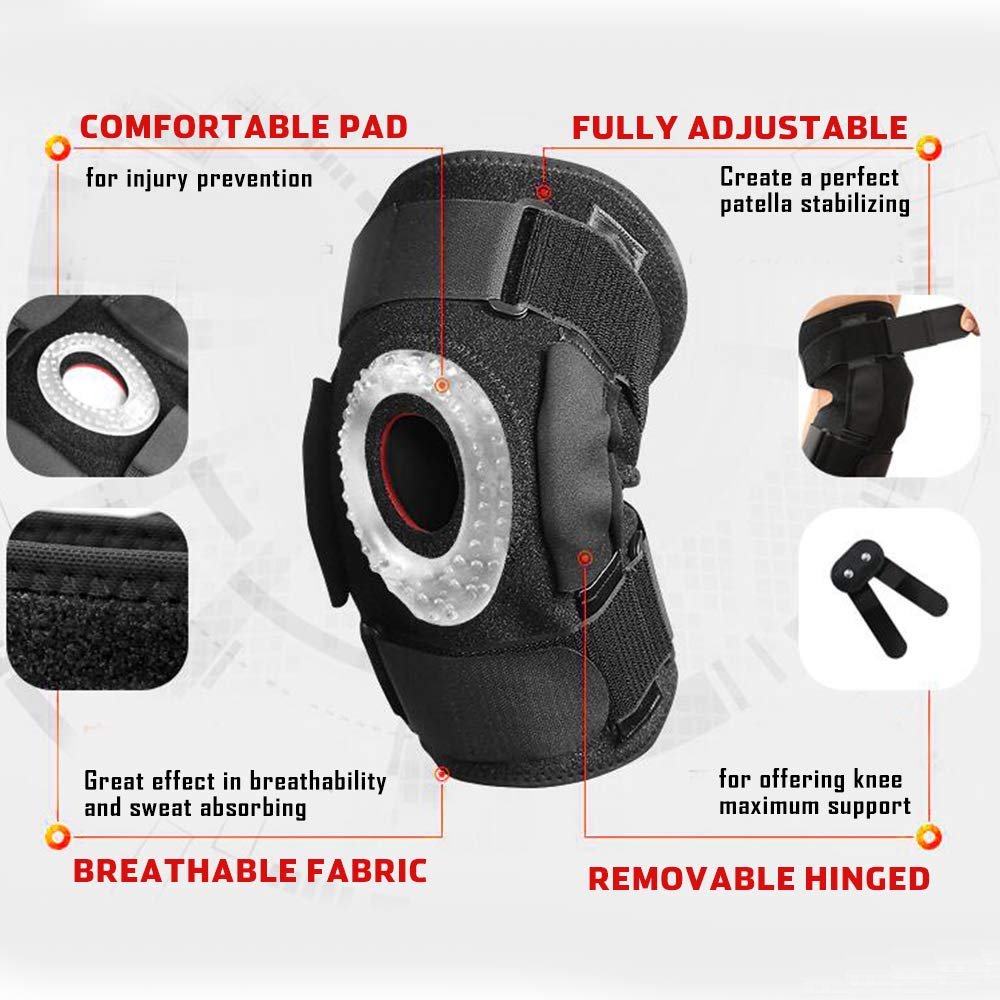
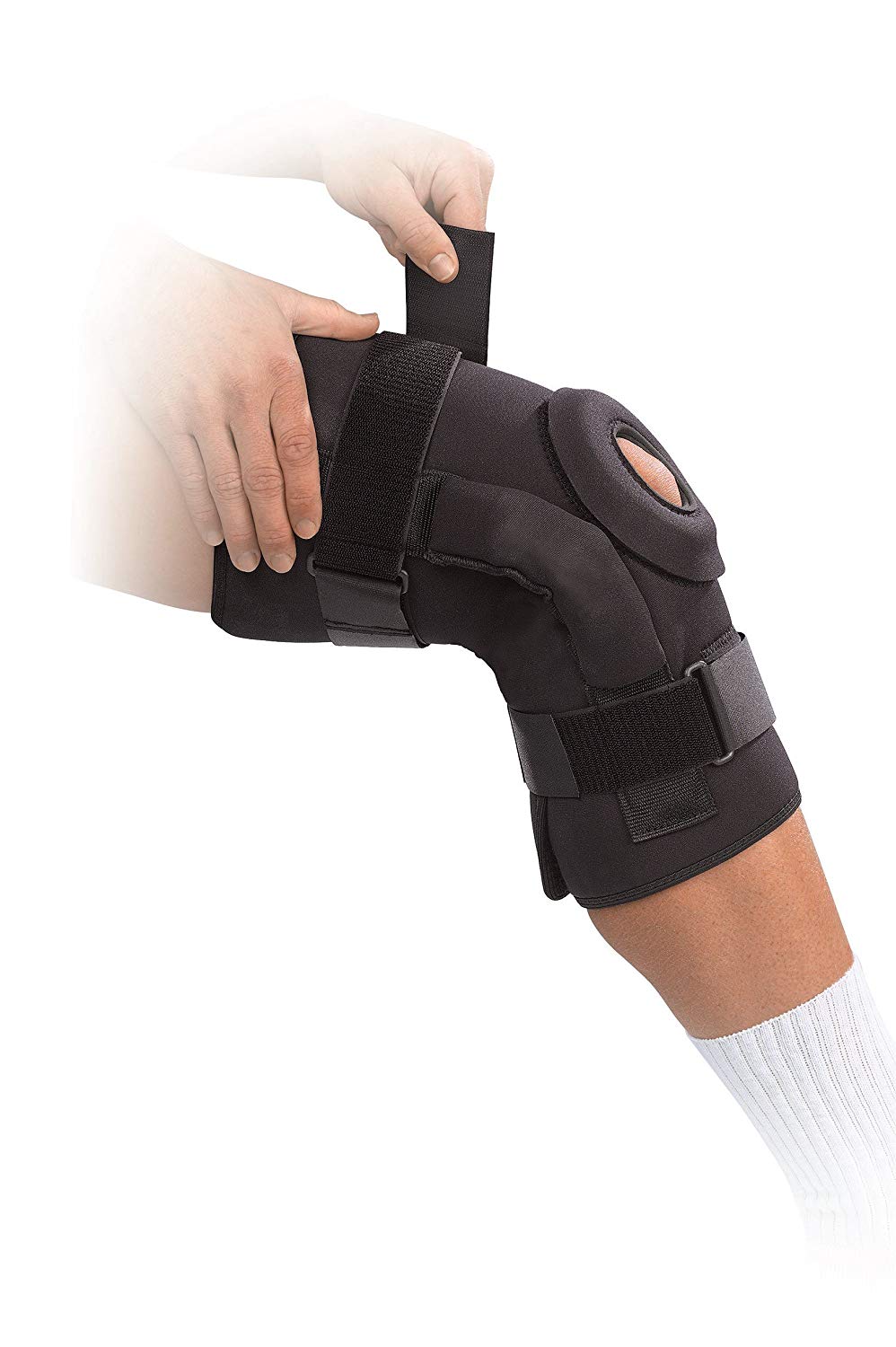
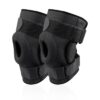
Reviews
There are no reviews yet.